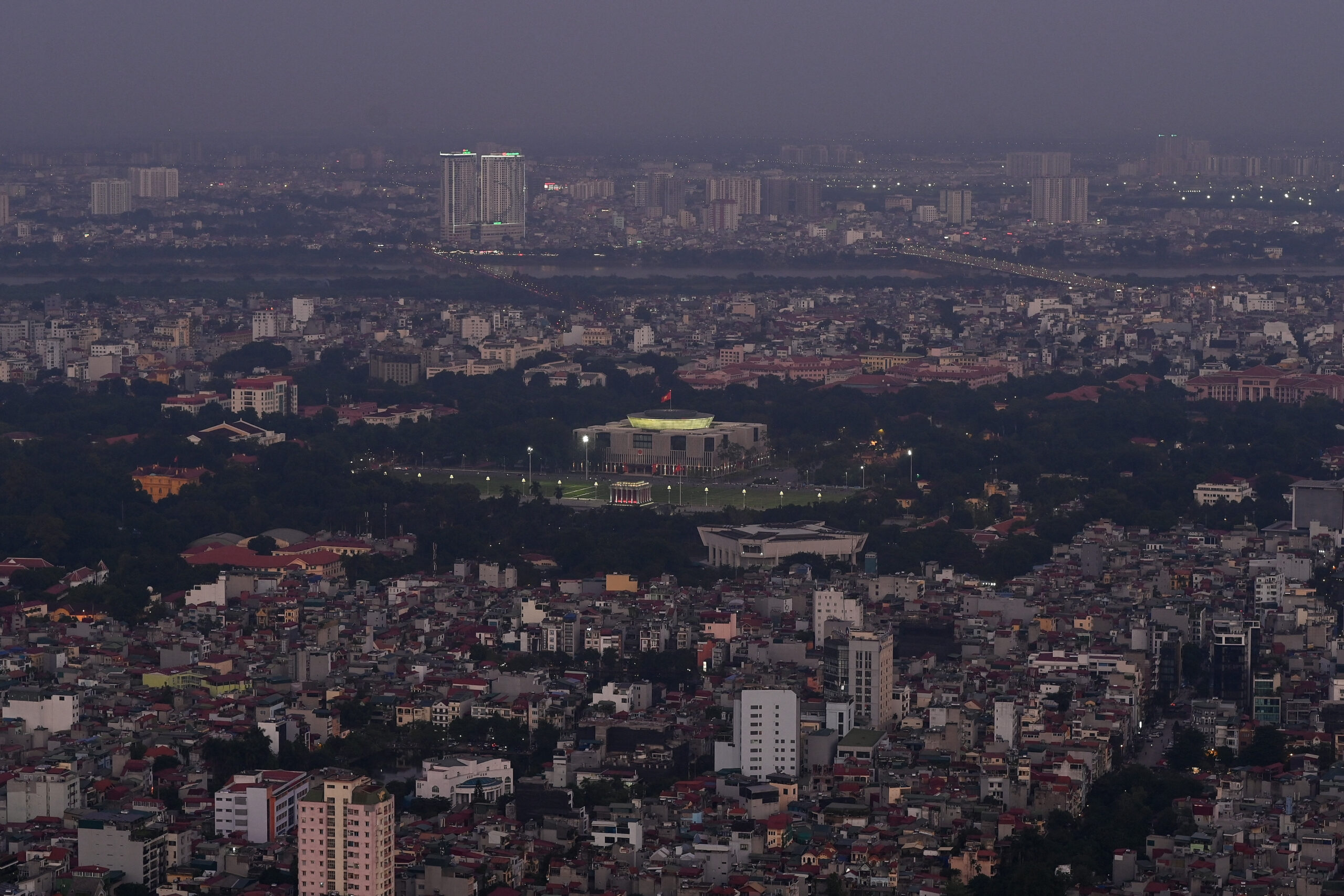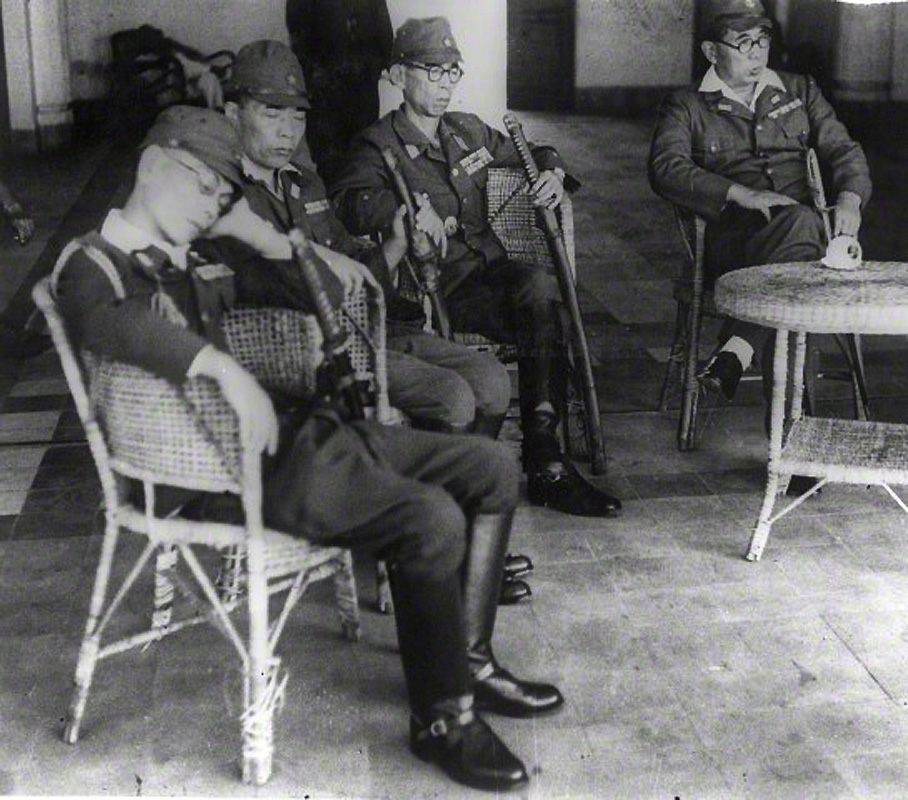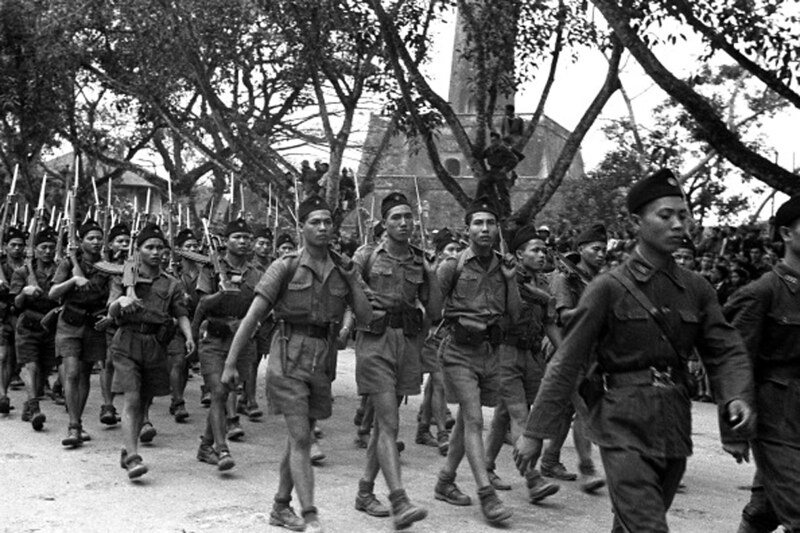French naval cannons and field artillery destroyed much of Haiphong as columns of fleeing refugees were strafed from airplanes to ‘teach a severe lesson’ to the Vietnamese army, government and people.
The attack on the main port city of northern Vietnam from 23–28 November 1946 was one of the worst massacres in the annals of the French colonial empire. The bloody event should be remembered as a crime against humanity and an example of how army commanders and colonial governors can pull their governments into unwanted wars.
Estimates vary of the number of civilians killed. A French Army spokesperson said there was a maximum of 300 while President Hồ Chí Minh of the Democratic Republic of Vietnam said the casualties numbered 20,000. Most researched historical accounts cite a figure around 6,000.
The conquest of Haiphong was a deliberate provocation by French High Commissioner Georges Thierry d’Argenlieu and his deputy, General Jean Valluy. The pair expected the Vietnamese Army to respond in kind, allowing France to crush the young republic and take control of the whole of French Indochina, the former name of the area that today includes Vietnam, Laos and Cambodia.
By November 1946, there were hostile French and Vietnamese forces living side by side in northern Vietnam.
As a strategically positioned port city, Haiphong had a special status in the French colonial system. In 1897, the French had established an Indochinese Union with its capital in Hanoi, which is connected to Haiphong by the Red River. The Indochinese Union consisted of five protectorates: Cambodia, Laos, Cochinchina, Annam and Tonkin. Cambodia had a king, Laos had several princely states, Annam in central Vietnam had a puppet emperor in Hue and Tonkin had a royal delegate appointed by the emperor.
Indirectly, they were all under a system of French rule. Yet Cochinchina and its huge commercial city of Saigon was a colony under direct French rule, as were the three strategic cities of Hanoi, Tourane (Da Nang) and Haiphong. The whole system was based on the principle of ‘divide-and-rule.’
Through most of World War II, it seemed the French Indochinese Union might survive. Marshal Philippe Pétain’s metropolitan government in Vichy, France, signed a treaty with Japan in 1941, allowing Japan to use Indochina militarily but leaving its government in French hands. Haiphong and other Indochinese ports thus served both the Japanese and French navies.
Then came revolutionary change. US naval carriers sailed into the South China Sea and sank French and Japanese ships along the Indochinese coast in January 1945. Japan feared a US invasion and knew the local French were preparing to support the allied invaders. Japan launched a preventive coup, concentrated the French in prisons and camps in March 1945 and killed resisters. The Japanese then offered nominal independence to the local monarchs. By August, they allowed the Vietnamese government in Hue to unite Tonkin, Annam and Cochinchina in a nation-state called “Viet Nam.”

At this late stage of the world war, Japan could not waste resources on governing Indochina. The local governments were mostly left to themselves. The Vietnamese emperor’s new government could not prevent a famine in north-central Vietnam or stop the spread of a revolutionary national liberation movement named Việt Nam Độc lập Đồng minh (Viet Minh).
In May 1941, the Viet Minh were established near the Chinese border under the leadership of the veteran communist Nguyễn Ái Quốc, later known as Hồ Chí Minh. The movement spread like wildfire between March and August 1945. When Japan surrendered on 15 August 1945, Viet Minh activists seized power in all three parts of Vietnam. The new Democratic Republic of Vietnam (DRV) was proclaimed in Hanoi on 2 September – since then Vietnam National Day – with Hồ Chí Minh as president. Throughout 1945 and 1946, a new revolutionary state was built in northern Vietnam with an elected parliament, a constitution and the whole suite of government services, including a new national army.
Soon after the ‘August Revolution,’ British forces arrived to disarm Japanese troops in the southern half of Indochina and Chinese nationalist troops poured into the north for the same purpose. The Chinese tolerated the DRV while the British re-armed French prisoners of war and helped them carry out a counter-revolutionary coup in Saigon. General Charles de Gaulle’s new French government sent an expeditionary force to Indochina and crushed the revolution in southern Vietnam.
The French signed an agreement in February 1945 with the Chinese nationalist government in Chongqing, which promised to facilitate a French return to northern Vietnam. A French expeditionary force boarded ships and sailed up the coast from Saigon and Tourane in March with the intention of landing in Haiphong and moving quickly up the Red River to Hanoi. At the same time, a French representative in Hanoi held talks with Hồ Chí Minh to discuss conditions for a French return.

In March 1946, the co-habitation of French and Vietnamese armed forces was established in northern Indochina. When the French ships arrived in Haiphong, the Chinese forces demanded France make an agreement with Hồ Chí Minh. To mark their point, the Chinese fired at the French ships in Haiphong. The French responded by blowing up a Chinese ammunition depot, but they could not risk war with both the DRV and China. The French commander panicked and instructed France’s negotiator in Hanoi to obtain an agreement even at the cost of concessions that might later be repudiated.
The Franco-Vietnamese agreement of 6 March 1946 recognized Vietnam as a ‘free state’ within a new French Union and stipulated that a referendum should be held on the unification of Tonkin , Annam and Cochinchina . Time and size limits were also established for French forces stationed in the north.
Admiral d’Argenlieu was appointed high commissioner for Indochina by General Charles de Gaulle in August 1945, five months before de Gaulle stepped down as president of the French government. De Gaulle’s stubbornly loyal admiral believed his mission was to re-establish the pre-war, divide-and-rule system with five separate Indochinese countries. He staunchly opposed any idea of Vietnamese unity, insisted on calling the Vietnamese “Annamites” and forbid the name “Vietnam.”
D’Argenlieu hated the March agreement allowing Hồ Chí Minh to travel to France as a statesman in the Summer of 1946 and sign a modus vivendi agreement with Minister of Overseas France Marius Moutet.
D’Argenlieu did all he could to undermine any chance for agreement between the French and Vietnamese governments, including establishing a separate government for Cochinchina with little power and no respect. The south was in favour of a national union with the north, leaving communist-led revolutionaries in the south to reorganise after their initial defeats and wage an effective guerrilla struggle.
The president of the Cochinchinese Republic committed suicide in November and leftist parties won elections in France, which was expected to strengthen the hand of socialists and communists in the French government. D’Argenlieu resolved to settle the Cochinchina crisis by striking at the “snake’s head” in the north and instructed commander-in-chief Jean Valluy to be ready for action.
A Franco-Vietnamese quarrel led to a serious incident in Haiphong on 20 November 1946, with the French and Vietnamese both claiming a right to inspect arriving ships and collect customs. When the French confiscated gasoline from a Chinese boat, Vietnamese police intervened and an exchange of gunfire resulted in several policemen being killed. Negotiations resolved the incident the next day.
A ceasefire, however, was not what Valluy wanted. On 22 November, he issued instructions to French commanders in the north: “The moment has come to teach those who have treacherously attacked us a severe lesson. By all the means at your disposal, you must gain complete control of Haiphong and make the Vietnamese Army and government regret their mistakes.”
In the next five days, the French conquered Haiphong after first attacking the city with naval bombardment and army artillery. Large parts of the city’s Vietnamese quarters were razed. Thousands were killed and young Vietnamese hearts were filled with a quest for revenge.
D’Argenlieu and Valluy no doubt hoped the conquest of Haiphong would lead to an immediate and violent reaction from the Vietnamese Army, allowing them to crush the DRV and rebuild a fully French-controlled Indochina. It took several weeks before Hồ Chí Minh took the bait.
He tried to contact the new government being formed in Paris by the peace-loving Léon Blum and avoid the outbreak of full-scale war. Only after the French had launched further provocations in the streets of Hanoi did the Vietnamese army and militias attack the French on the evening of 19 December 1946. Just in time to prevent Léon Blum from intervening, d’Argenlieu and Valluy got their new colonial war.
The French conquest of Haiphong was the prelude to the First Indochina War beginning in 1946 and ending with the French defeat at Dien Bien Phu and the 1954 Geneva Agreements. Once again, Vietnam was divided into south and north. More war, more massacres, more tragedy would follow.
Stein Tønnesson is a research professor with the Peace Research Institute Oslo and the author of The Vietnamese Revolution of 1945 and Vietnam 1946: How the War Began


